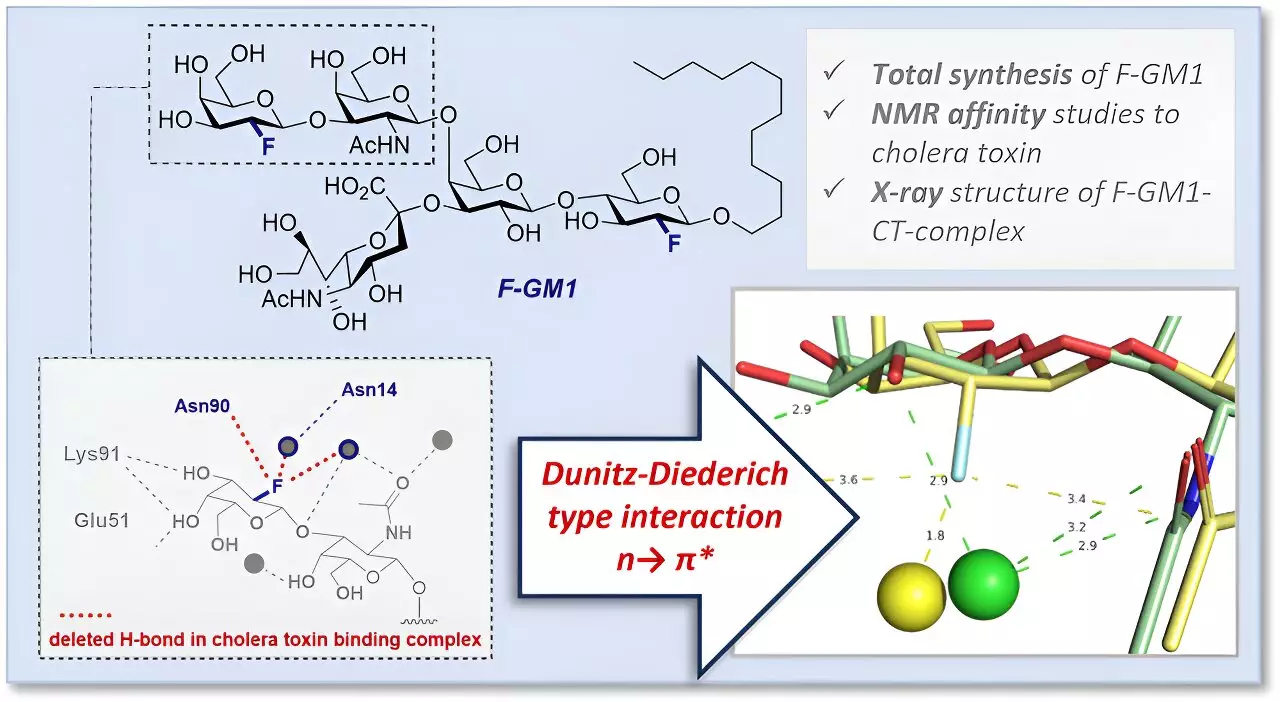Cholera, a life-threatening infection caused by Vibrio cholerae bacteria, is known for the rapid loss of fluids in the body. The trigger for this rapid fluid loss is the cholera toxin produced by the bacteria. This toxin binds to the surface of intestinal cells, specifically targeting “sugar lipids” known as GM1 gangliosides. The bond formed between the toxin and GM1 gangliosides is one of the strongest interactions known between a protein and a sugar molecule. This interaction allows the cholera toxin to penetrate intestinal cells, leading to the severe symptoms of cholera.
A recent study conducted by a collaborative team from the University of Münster, ETH Zürich, and Leibniz Universität Hannover focused on analyzing a key component of the GM1 cholera toxin complex. By using a fluorinated GM1 analog known as F-GM1, the researchers were able to gain insights into the molecular mechanisms of this strong interaction. This approach allowed for a more precise understanding of how the cholera toxin binds to GM1 gangliosides at a molecular level. The findings from this study have the potential to enhance our knowledge of cholera and aid in the development of new drugs for the treatment of the disease.
Fluorine, used as a tool in the production of the F-GM1 analog, offers several advantages in studying molecular interactions. One of the key benefits of using fluorine is its ability to increase the stability of molecules against enzymatic degradation. Additionally, fluorine allows for the control of the spatial arrangement of atoms during chemical synthesis, leading to greater precision in the design of glycomimetics. The researchers were able to investigate the interaction between cholera toxin and F-GM1 in a solution similar to that found in the body using nuclear magnetic resonance spectroscopy (NMR spectroscopy). The affinity of the analog for binding to cholera toxin closely resembled that of natural GM1, highlighting the potential of fluorinated compounds in biomedical research.
Molecular Insights from Protein Crystallography
In addition to NMR spectroscopy, the research team utilized protein crystallography to further investigate the interactions between F-GM1 and the binding pocket of cholera toxin. This detailed analysis revealed additional interactions within the molecular complex facilitated by the presence of fluorine. The researchers observed a slightly lower affinity of F-GM1 for cholera toxin compared to natural GM1, attributing this difference to a changed arrangement of functional groups in the binding pocket. These insights shed light on the molecular mechanisms underlying the interaction between cholera toxin and GM1 gangliosides, opening up new possibilities for future research in the field.
Implications for Biomedical Research
The study underscores the potential of using fluorinated gangliosides in biomedical research, particularly in investigating molecular signaling pathways involving sugar chains. By exploring the interactions of fluorinated compounds with target proteins, researchers can identify new therapeutic targets, develop novel drugs, and even advance vaccine development. The unique properties of fluorinated compounds provide a valuable tool for studying complex molecular interactions and offer new avenues for research in the field of cholera and beyond.


Leave a Reply